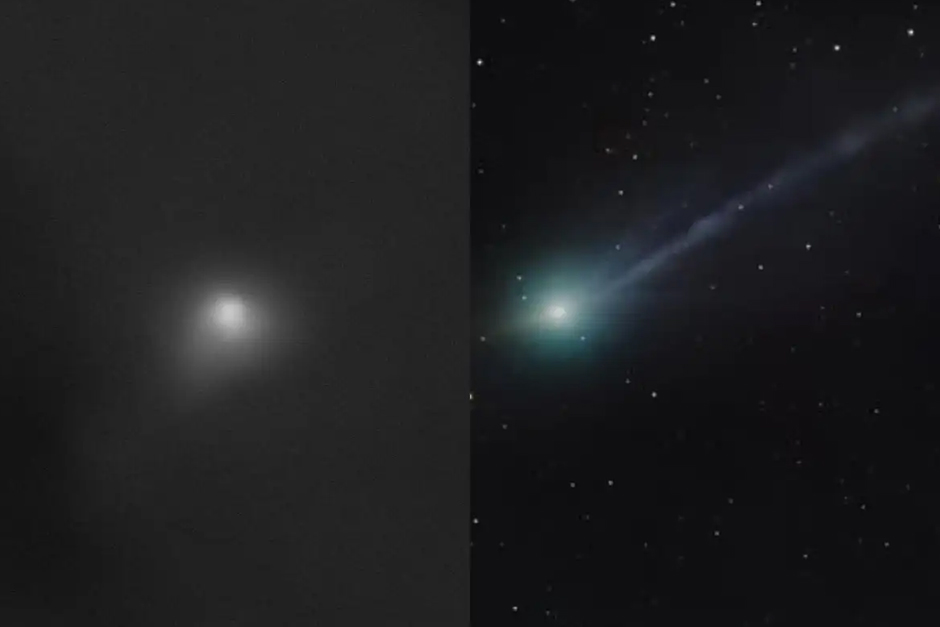The vast cosmic canvas continually unfurls new mysteries, captivating audiences worldwide. Recently, an object designated 3I/ATLAS has ignited a fresh wave of excitement and, perhaps unexpectedly, a lively debate online. Touted as a potential third interstellar visitor to our solar system, its fleeting presence has not only enthralled astronomers but also sparked a curious online showdown: NASA versus the burgeoning community of amateur stargazers. As anticipation builds for more detailed observations, netizens across India and the globe are vocalising their expectations, criticisms, and fervent desire for high-resolution glimpses of this enigmatic celestial wanderer.
Why Netizens Criticize NASA: The 3I/ATLAS Transparency Debate
The discovery of 3I/ATLAS, initially identified through the ATLAS survey, sent ripples of excitement through the astronomical community. Its presumed interstellar origin, following 1I/ʻOumuamua and 2I/Borisov, makes it a rare and invaluable target for study. However, unlike its predecessors, the discourse around 3I/ATLAS has taken an unusual turn online, with many netizens expressing frustration directed towards NASA.
The core of the criticism stems from a perceived disparity in information dissemination. Amateur astronomers and independent observatories, equipped with sophisticated backyard telescopes and a rapid-fire communication network, have been quick to track 3I/ATLAS, often sharing initial images and trajectory updates within hours or days. These contributions, amplified through social media platforms, have fostered a sense of collective discovery and immediate access to information. In contrast, official releases from NASA and other major space agencies are often seen as slower, more guarded, and sometimes less visually satisfying than what dedicated amateurs manage to capture.
Netizens argue that a publicly funded agency like NASA, with access to unparalleled resources like the Hubble Space Telescope or the James Webb Space Telescope, should be at the forefront of immediate public engagement. The delay in releasing high-resolution images or detailed data summaries leads to speculation and frustration. Many feel that the public, which ultimately funds these missions, deserves more transparent and timely updates, especially when amateur communities are already providing a steady stream of observations. This sentiment resonates particularly strongly in India, where a vibrant and growing community of amateur astronomers and space enthusiasts keenly follows global developments, often reflecting similar calls for greater accessibility and transparency from their own national agencies.
When is NASA’s Special 3I/ATLAS Session and the Quest for High-Res Images?
The question of a “special 3I/ATLAS session” from NASA is often posed by an eager public hoping for a dedicated, real-time event. While NASA typically doesn’t hold single ‘sessions’ in that live-streamed sense for every significant object, it’s crucial to understand that major observatories are actively observing 3I/ATLAS. Telescopes like Hubble, various ground-based observatories, and potentially even space-based assets like Spitzer (if relevant to its spectral characteristics) would have already been scheduled for observation time, or new schedules would have been rapidly adjusted to capture this unique visitor.
The process from observation to public release is complex. Data collected by powerful telescopes needs to be calibrated, processed, and often undergo peer review before being officially published. This meticulous scientific process ensures accuracy and proper interpretation, but it inevitably takes time – a timeline often at odds with the internet’s demand for instant gratification. The faintness and rapid motion of an object like 3I/ATLAS also pose significant challenges, requiring precise targeting and long exposure times, which are then painstakingly processed to yield meaningful scientific data and, eventually, compelling images.
Regarding the release of high-resolution pictures, NASA’s history suggests that such images will eventually be released, but likely after initial scientific analysis is complete. The agency’s commitment to public outreach means stunning visuals are usually a part of their communication strategy, albeit on a schedule dictated by scientific rigour rather than breaking news. However, expectations should be tempered; even with powerful instruments, interstellar objects can be inherently small, distant, and lack the spectacular visual features of, say, a nearby planet or nebula. The true value often lies in the scientific data derived from these observations, rather than just their aesthetic appeal.
“While NASA has unparalleled resources, the sheer speed and passion of the amateur community often puts the first images and updates out there. We just want to see the same level of transparency and excitement from the big agencies when such unique objects like 3I/ATLAS appear,” says Rohan Sharma, an amateur astronomer from Bengaluru, echoing a sentiment widely shared among space enthusiasts.
The Evolving Dynamic: Collaboration Over Competition?
The online debate around 3I/ATLAS, while appearing to pit professional agencies against amateur enthusiasts, highlights an evolving dynamic in space exploration. Amateur astronomers play a pivotal role, often being the first to spot new comets, asteroids, and even interstellar objects. Their widespread network and immediate sharing capabilities act as an early warning system and a powerful public engagement tool. NASA and other professional agencies, on the other hand, bring unmatched scientific instrumentation, deep analytical expertise, and the capacity for long-term, detailed studies that are beyond the scope of individual amateurs.
Rather than a competition, the ideal scenario is one of collaboration. Public criticism, while sometimes harsh, serves as a valuable feedback mechanism, urging greater transparency and quicker dissemination of information from large organisations. As technology makes advanced astronomy more accessible, the lines between professional and amateur contributions are blurring, paving the way for citizen science initiatives and a more inclusive approach to understanding our universe. The story of 3I/ATLAS, therefore, is not just about a mysterious object; it’s also about the changing landscape of space discovery and the collective human drive to look up and learn.
As we await further official word and those coveted high-resolution images, the curiosity surrounding 3I/ATLAS continues to unite stargazers, pushing the boundaries of both scientific inquiry and public engagement. Its journey through our solar system, however brief, serves as a poignant reminder of the wonders that lie beyond and the shared human desire to unravel them.




